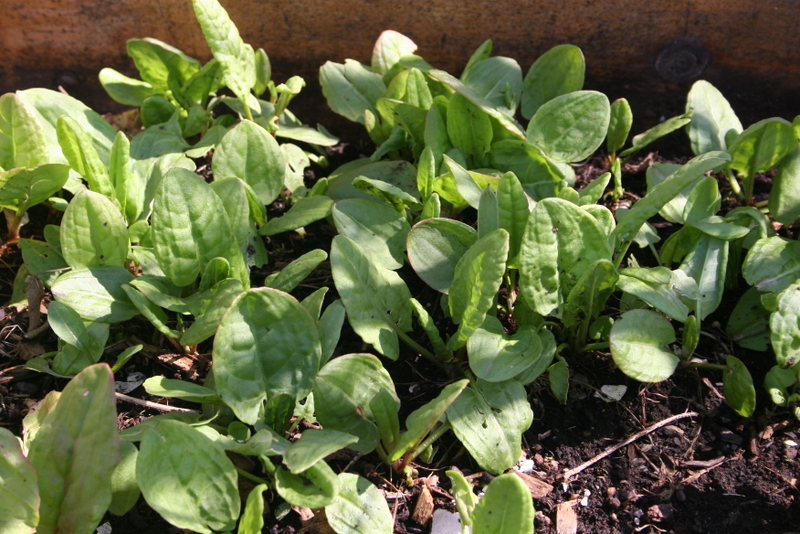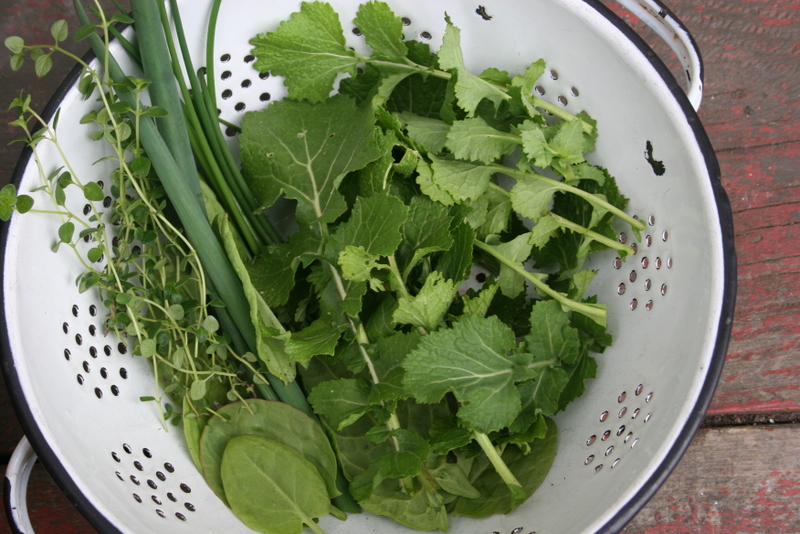Last weekend, I had the extreme good pleasure to attend a workshop on extending your growing season. The workshop facilitator was Dan Rubin, a home vegetable gardener who, through tactical use of raised beds, glass panes, and plastic row covers, has grown a whole lot of impressive eats in a location which is, essentially, a salt-lashed, wind-beaten, topsoil-less bit of rock (and I say that with love - I was born there and I adore the place). As the workshop participants wandered Dan's garden, and the garden at Points East Bed and Breakfast next door, we identified the plants which, despite having been left outside for the harsh coastal winter, were doing just fine: kale, huge leeks, sorrel, thyme, Egyptian onions... perhaps not looking quite as lush as they had been in October, but still mighty impressive.
Now, my own garden is also bursting with vegetables that survived the winter, however, in my case, most of the veggies are still there because I did such a miserable job of tidying the garden last year. Because really, aside from putting in a new batch of garlic, I didn't do a thing. Even the garlic I managed to mess up - I don't think I got around to planting it until January some time, so if I get decent heads it will be against all odds (and purely down to my excessive application of compost and prayer... and I'm an atheist, so it's really about the compost...).
I've been picking at the sorrel and the chives for a little bit now, and I ate what was left of the droopy kale. The oregano popped up, and my husband and I were compelled to fire up the grill for our inaugural spring "souvlaki plate" dinner.
And then I found something I hadn't anticipated. In the very messy bed in the front yard, there was this weedy-looking thing that had remained green under all the snow (and under the Christmas tree that we had stylishly discarded on top of it). I didn't give the weedy thing much thought, because I couldn't remember what I had planted there. But then it struck me: arugula! Survivor arugula! Survivorugula!
Sure enough, the weedy-looking stuff was the arugula that I had planted last year and which, in the terrible weather we had, didn't make much of an appearance at all. Here it had been, silently waiting out the cold, and then bursting into leaf as soon as the snow melted. It was tender, sweet, and possibly the most delicious arugula I have ever eaten.
I harvested a bunch of it, along with some sorrel, chives, Egyptian onions, and some lemon thyme (a little leggy from spending the winter in the kitchen window, but still tasty). Then I boiled some new potatoes until they were tender, while sauteeing my harvest with some of the last summer garlic. When the potatoes were done and the greens just wilted, I tossed it all together.
A meal fit for royalty, I tell you!
Since then, I have picked at the arugula a little more - I used some for greens in our burgers last night (along with some fresh herb mayo that I whipped together using some more of the chives and lemon thyme, with a generous grinding of black pepper). It won't last long, I'm sure; apparently overwintered arugula bolts at the slightest provocation. That's okay, though, because I have more arugula coming up in the cold frame to take the place of this stuff. I don't think it could possibly be as lovely, though.
This fall, I will definitely make sure I have some arugula overwintering somewhere in the garden. And I'll write down where I put it, too, so I don't end up wasting precious days asking, "What the heck kind of weedy thing is that?"













